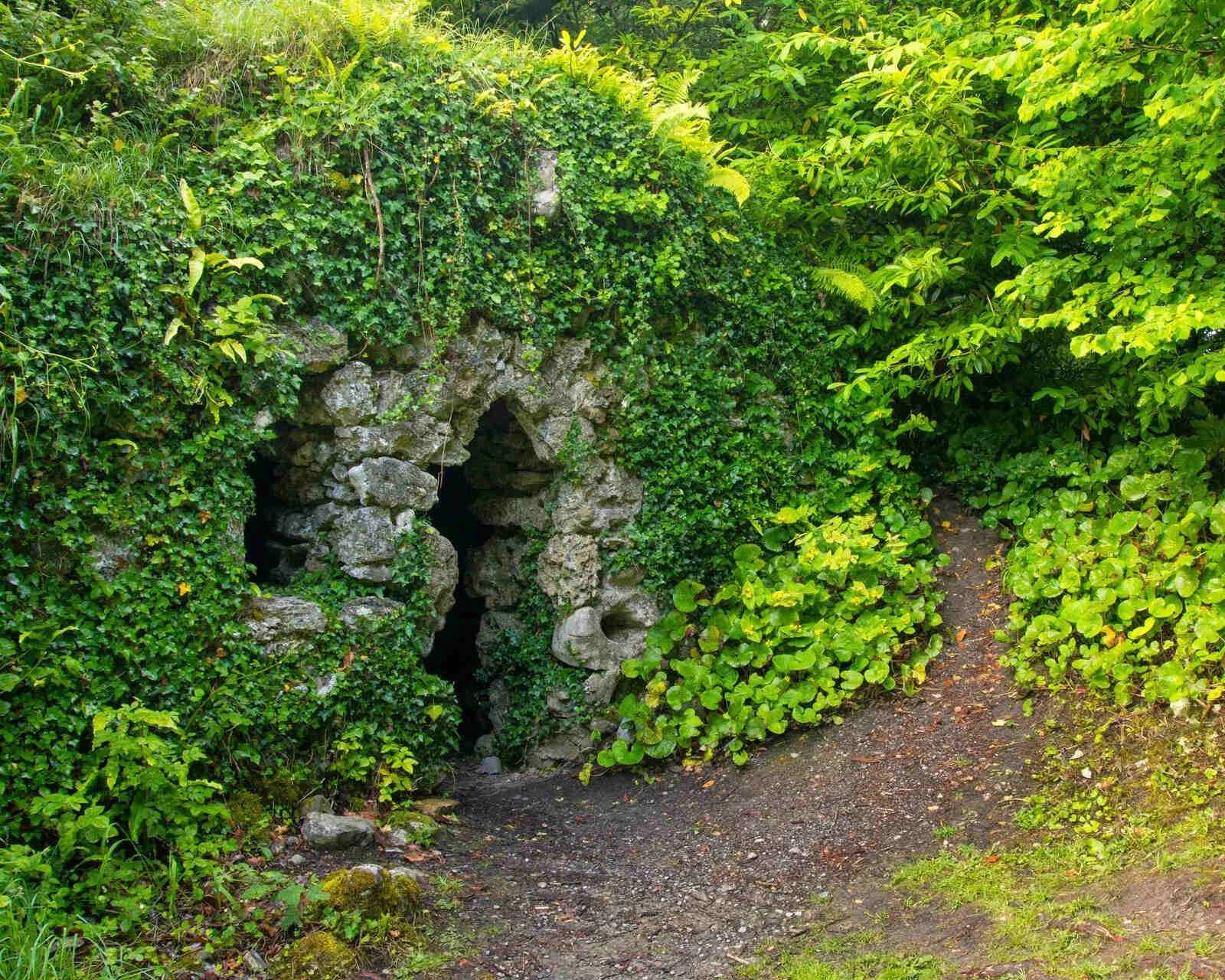
Garden hermits were real people hired in the 18th and 19th centuries to live in artificial grottoes or hermitages on wealthy estates. These individuals, often dressed in druid-like robes, added a touch of mystery and whimsy to the gardens. Why did people hire garden hermits? Wealthy landowners sought to enhance their gardens with a sense of romanticism and contemplation. Hermits were expected to live in solitude, avoid modern comforts, and sometimes even grow long beards to fit the part. This peculiar trend reflected the era's fascination with nature, solitude, and the picturesque. Intrigued by these quirky historical figures? Read on to uncover 37 fascinating facts about garden hermits that will transport you back to a time when eccentricity was a garden's greatest asset.
Key Takeaways:
- Garden hermits were hired in 18th-century Europe to live in rustic hermitages, adding to the picturesque atmosphere of wealthy landowners' gardens. They followed strict rules and were seen as living art.
- The legacy of garden hermits continues to inspire modern garden design, academic research, literature, and media. Their role reflects the 18th-century fascination with nature, solitude, and the sublime.
The Curious World of Garden Hermits
Garden hermits were a fascinating phenomenon in 18th-century Europe. Wealthy landowners would hire individuals to live as hermits in their gardens, creating a picturesque and contemplative atmosphere. Here are some intriguing facts about this unique historical practice.
-
Garden hermits were often hired to live in specially built hermitages on the estates of wealthy landowners. These hermitages were designed to look rustic and ancient, adding to the mystique.
-
The practice of employing garden hermits became popular in England during the 18th century. It was part of the Romantic movement, which valued nature, solitude, and introspection.
-
Garden hermits were expected to live a life of solitude and contemplation. They often had to adhere to strict rules, such as not cutting their hair or nails.
-
Some garden hermits were required to dress in a specific way. They might wear robes or other clothing that made them look more like traditional hermits or monks.
-
The role of a garden hermit was often seen as a form of living art. The hermit and their hermitage were part of the overall aesthetic of the garden.
-
Garden hermits were sometimes given a small stipend or other forms of compensation. This could include food, shelter, and a modest allowance.
-
Not all garden hermits were genuine hermits. Some were actors or individuals hired specifically for the role, rather than people who had chosen a solitary lifestyle.
-
The concept of the garden hermit was influenced by earlier traditions of hermit saints and ascetics. These figures were often revered for their piety and wisdom.
-
Garden hermits were sometimes expected to provide wisdom or guidance to visitors. They might offer philosophical insights or simply serve as a symbol of contemplation.
-
The popularity of garden hermits declined in the 19th century. Changes in fashion and attitudes towards nature and solitude led to the practice falling out of favor.
The Life and Duties of Garden Hermits
Living as a garden hermit wasn't just about solitude. There were specific duties and expectations placed upon these individuals, making their role both unique and challenging.
-
Garden hermits often had to follow strict dietary rules. They might be required to eat only certain foods, such as vegetables or bread.
-
Some garden hermits were expected to perform rituals or ceremonies. These could be related to nature, spirituality, or the changing seasons.
-
The hermitages where garden hermits lived were often designed to look dilapidated or overgrown. This added to the sense of antiquity and mystery.
-
Garden hermits sometimes had to interact with guests at the estate. They might be asked to share stories, recite poetry, or engage in philosophical discussions.
-
The presence of a garden hermit was meant to evoke a sense of the sublime. This was a key concept in Romanticism, which valued awe and wonder in the face of nature.
-
Garden hermits were often depicted in literature and art of the time. They became symbols of wisdom, solitude, and the natural world.
-
Some garden hermits were required to live in complete silence. This added to their aura of mystery and contemplation.
-
The role of a garden hermit could be physically demanding. They might have to maintain their hermitage or perform other tasks around the garden.
-
Garden hermits were sometimes seen as a form of entertainment. Visitors to the estate might be intrigued by the hermit's lifestyle and appearance.
-
The idea of the garden hermit was part of a broader trend towards creating 'natural' landscapes. These gardens were designed to look wild and untamed, in contrast to the formal gardens of earlier periods.
Famous Garden Hermits and Their Stories
Some garden hermits became quite well-known, either during their lifetimes or in historical accounts. Their stories provide a fascinating glimpse into this unusual practice.
-
One of the most famous garden hermits was Father Francis. He lived at Hawkstone Park in Shropshire, England, and became a well-known figure in the area.
-
Father Francis was required to live in a cave and follow strict rules. He had to dress in a robe, grow his hair and beard long, and live a life of solitude.
-
Another well-known garden hermit was the hermit of Painshill Park. This hermit was hired by Charles Hamilton, the owner of the estate, to live in a specially built hermitage.
-
The hermit of Painshill Park was expected to live in complete isolation for seven years. However, he reportedly left after just three weeks.
-
Some garden hermits became the subjects of local legends and folklore. Their mysterious lifestyles and unusual appearances made them intriguing figures.
-
The practice of employing garden hermits spread to other parts of Europe. It became popular in countries such as France and Germany, as well as England.
-
Garden hermits were sometimes featured in guidebooks and travel accounts. Visitors to estates with hermits would often write about their experiences.
-
The role of the garden hermit was sometimes romanticized in literature. Writers of the time often depicted hermits as wise and noble figures.
-
Garden hermits were occasionally the subjects of satirical works. Some writers and artists poked fun at the practice, seeing it as a frivolous trend among the wealthy.
-
The decline of the garden hermit coincided with changes in garden design. The move towards more naturalistic landscapes made the presence of a hermit less necessary.
The Legacy of Garden Hermits
Though the practice of employing garden hermits has long since faded, its legacy can still be seen in various ways. The concept continues to capture the imagination and inspire curiosity.
-
The idea of the garden hermit has influenced modern garden design. Some contemporary gardens include features that evoke the spirit of the hermitage.
-
Garden hermits have been the subject of academic research. Scholars have studied the phenomenon to understand its cultural and historical significance.
-
The concept of the garden hermit has appeared in modern literature and media. Writers and filmmakers have drawn on the idea to create intriguing characters and settings.
-
Some historical estates have restored their hermitages. These sites offer visitors a glimpse into the past and the world of the garden hermit.
-
The garden hermit has become a symbol of solitude and contemplation. In a busy modern world, the idea of retreating to a hermitage holds a certain appeal.
-
The practice of employing garden hermits reflects broader trends in 18th-century culture. It highlights the period's fascination with nature, solitude, and the sublime.
-
The legacy of the garden hermit can be seen in the continued interest in hermitages and solitary retreats. People today still seek out places of solitude and reflection, much like the garden hermits of the past.
The Quirky World of Garden Hermits
Garden hermits, those eccentric individuals who lived in ornamental gardens, offer a fascinating glimpse into the past. These reclusive figures were often hired by wealthy landowners during the 18th and 19th centuries to add a touch of mystique to their estates. Living in rustic hermitages, they embodied the romantic ideal of solitude and contemplation.
Though the practice of employing garden hermits has long faded, their legacy lives on in literature, art, and popular culture. These unique characters remind us of a time when nature and solitude were highly valued, and eccentricity was celebrated.
So, next time you stroll through a historic garden, imagine a hermit tucked away in a secluded corner, pondering life's mysteries. It's a quirky piece of history that adds a touch of charm to our understanding of the past.
Frequently Asked Questions
Was this page helpful?
Our commitment to delivering trustworthy and engaging content is at the heart of what we do. Each fact on our site is contributed by real users like you, bringing a wealth of diverse insights and information. To ensure the highest standards of accuracy and reliability, our dedicated editors meticulously review each submission. This process guarantees that the facts we share are not only fascinating but also credible. Trust in our commitment to quality and authenticity as you explore and learn with us.


